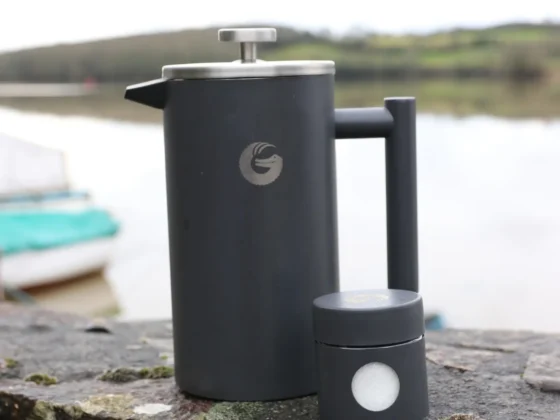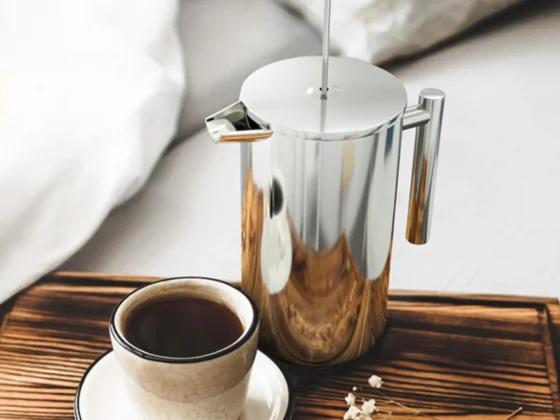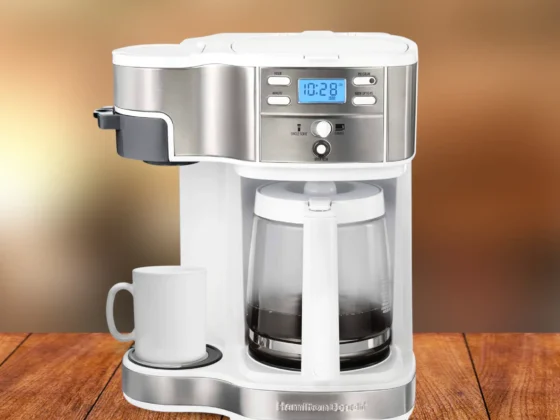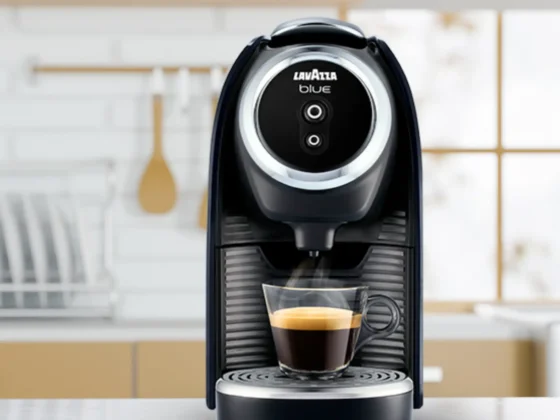Moka pots have been a favorite for those seeking a robust and flavorful coffee experience at home. This traditional stovetop coffee maker has the power to unlock the deepest flavors from coffee beans, but its magic is truly realized with the right coffee blend. Whether you’re a fan of the majestic Himalayan heights with Nepal Himalayan Coffee by Volcanica or the Italian coffee traditions embodied by Illy and Lavazza, choosing the best coffee for Moka pot is essential. In this article, we’ll dive into the world of premium coffee blends, understanding the flavors, aromas, and characteristics that make them stand out, ensuring that every cup you brew with this distinguished coffee maker is nothing short of perfection.
Best Moka Pot Coffee: Key Takeaway
- The Moka Pot’s Legacy: Originating from Italy, this pot has a rich history and has become synonymous with traditional coffee brewing. Its unique brewing mechanism has made it a household favorite, especially in Europe and Latin America.
- Bean Selection Matters: For an exceptional brew, the choice of coffee beans is crucial. Brands like Nepal Himalayan Coffee by Volcanica, 100% Kona Natural Medium Roast, and Illy Classico Espresso stand out in delivering a rich and flavorful cup.
- Brewing Mechanics: This coffee maker operates using a distinct mechanism where steam-driven pressure pushes hot water through coffee grounds. Understanding this process is key to mastering the perfect brew.
- Maintenance for Longevity: Regular cleaning and maintenance of this coffee pot not only prolong its lifespan but also ensure consistent quality in every brew. From daily rinsing to periodic descaling, proper care makes a difference.
- Sustainability in Coffee: Alongside brewing, the article emphasizes the importance of sustainable coffee choices and eco-friendly practices, aligning coffee enjoyment with environmental responsibility.
Best Coffee for Moka Pot
The Moka pot, a stovetop coffee maker, has gained immense popularity for the rich, aromatic brew it produces. While its design ensures a robust cup, the choice of coffee used plays an integral role in enhancing the flavor profile. In this review, we’ll explore some of the finest brands best suited for Moka pots. These include the likes of Nepal Himalayan Coffee by Volcanica, 100% Kona Natural Medium Roast Coffee, and Illy Classico Espresso Ground Coffee, among others. Discovering the best coffee for moka pot can elevate your brewing experience to a whole new dimension.
Nepal Himalayan Coffee by Volcanica
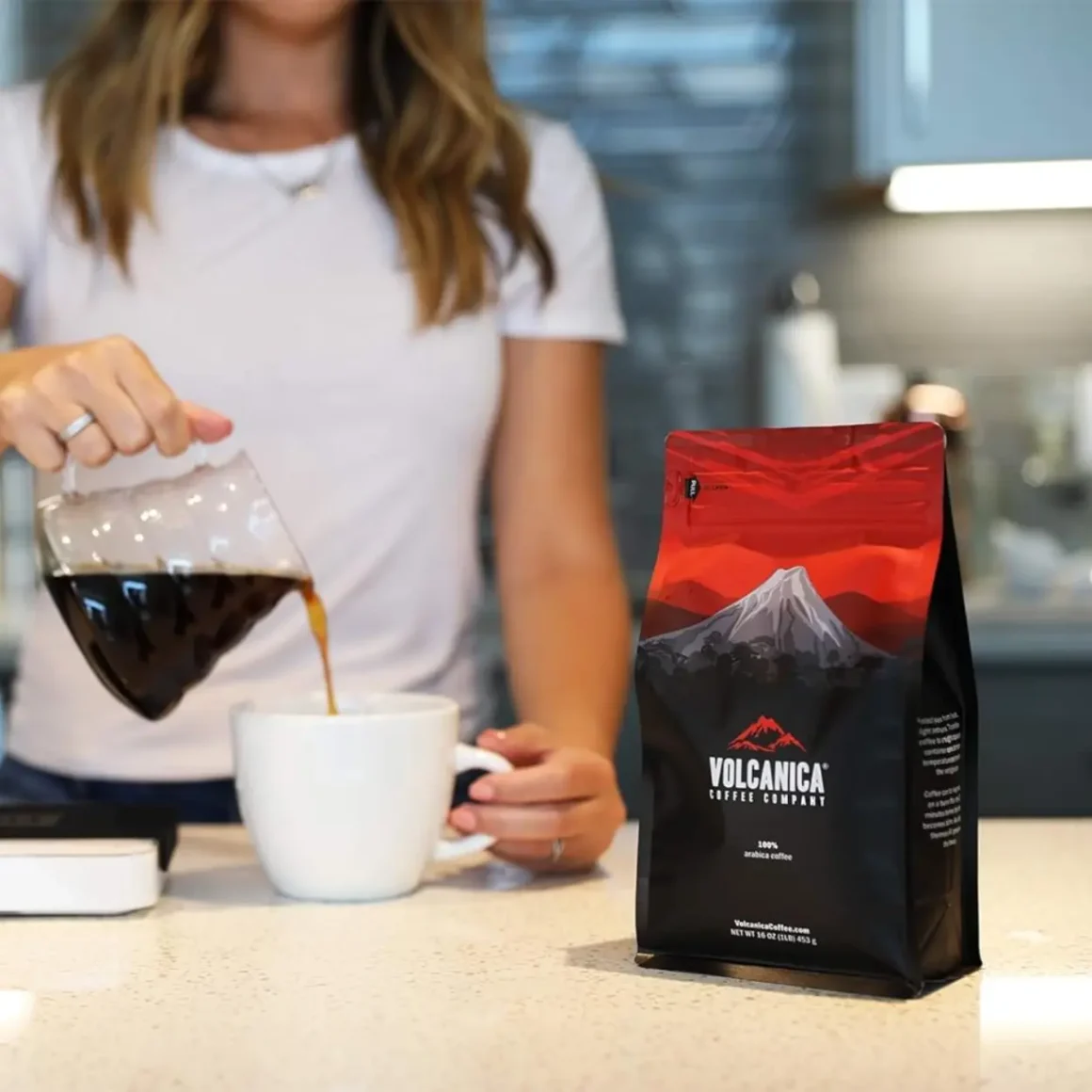
If you’re seeking a blend that’s as majestic as the Himalayas, then the Nepal Himalayan Coffee by Volcanica is your go-to choice. This distinctive coffee, grown at staggering heights in Nepal’s Rasuwa District, promises an unparalleled sensory experience.
- Rich Heritage: Cultivated in the Northernmost coffee regions of the world, it offers an essence comparable to the renowned Jamaica Blue Mountain Coffee.
- Exquisite Flavor Profile: An enticing combination of Almonds, Cranberries, Dried Plums, and a hint of Citrus.
- Awards and Recognition: Recognized as the “Top Producer in 2016” by Nepal’s Government and awarded “Finest Gourmet Coffee of 2016” at the Paris-based 2nd Global Roasted Coffee Competition.
The collaboration with Elevate Nepal brings forth not just a coffee blend but also a story of community upliftment. This medium roast is meticulously sun-dried, ensuring a cup that’s as profound and elevating as the Himalayan peaks themselves.
100% Kona Natural Medium Roast Coffee

100% Kona Natural Medium Roast Coffee stands as a testament to the craft of coffee-making. Each bean is a testament to Hawaii’s fertile grounds, combining both tradition and taste.
- Pure Indulgence: The coffee preserves the intrinsic flavors of the coffee cherry, delivering a brew replete with fruit undertones and inviting aromas.
- Processing Excellence: Utilizing the natural method, the beans are sun-dried in their cherries, amplifying their innate attributes.
- Journey of Flavor: Beyond just a cup of coffee, it offers a lingering taste adventure, making each sip memorable.
The natural sun-drying process employed enhances the coffee seed’s flavors, making it resonate with the sweet and nourishing qualities of its fruit. With its soft yet vivid texture and remarkable fruit notes, this is a coffee that beckons you, not just to taste, but to savor.
Caffè Borbone Crema Classica

For those in pursuit of a truly Italian coffee experience, Caffè Borbone’s Crema Classica emerges as an epitome of Naples’ rich coffee culture. With every sip, one can sense the city’s heartbeats and hear its bustling streets.
- Finest Bean Fusion: An impeccable blend of the finest Arabica and Robusta beans, ensuring an ideal balance of taste, depth, and smoothness.
- 8/10 Intensity: A robust yet harmonious blend, velvety to the palate and perfect for milk-based concoctions.
- Heritage & Innovation: With its roots dating back to 1998 in Naples, Caffè Borbone has constantly evolved, harnessing modern techniques to bring forth the timeless Neapolitan coffee flavor to the world.
Caffè Borbone doesn’t just offer coffee; it offers an Italian legacy, a tradition, and an unmatched commitment to quality. Savor it, and you’ll understand why it stands out in the crowded world of coffee.
Illy Classico Espresso Ground Coffee
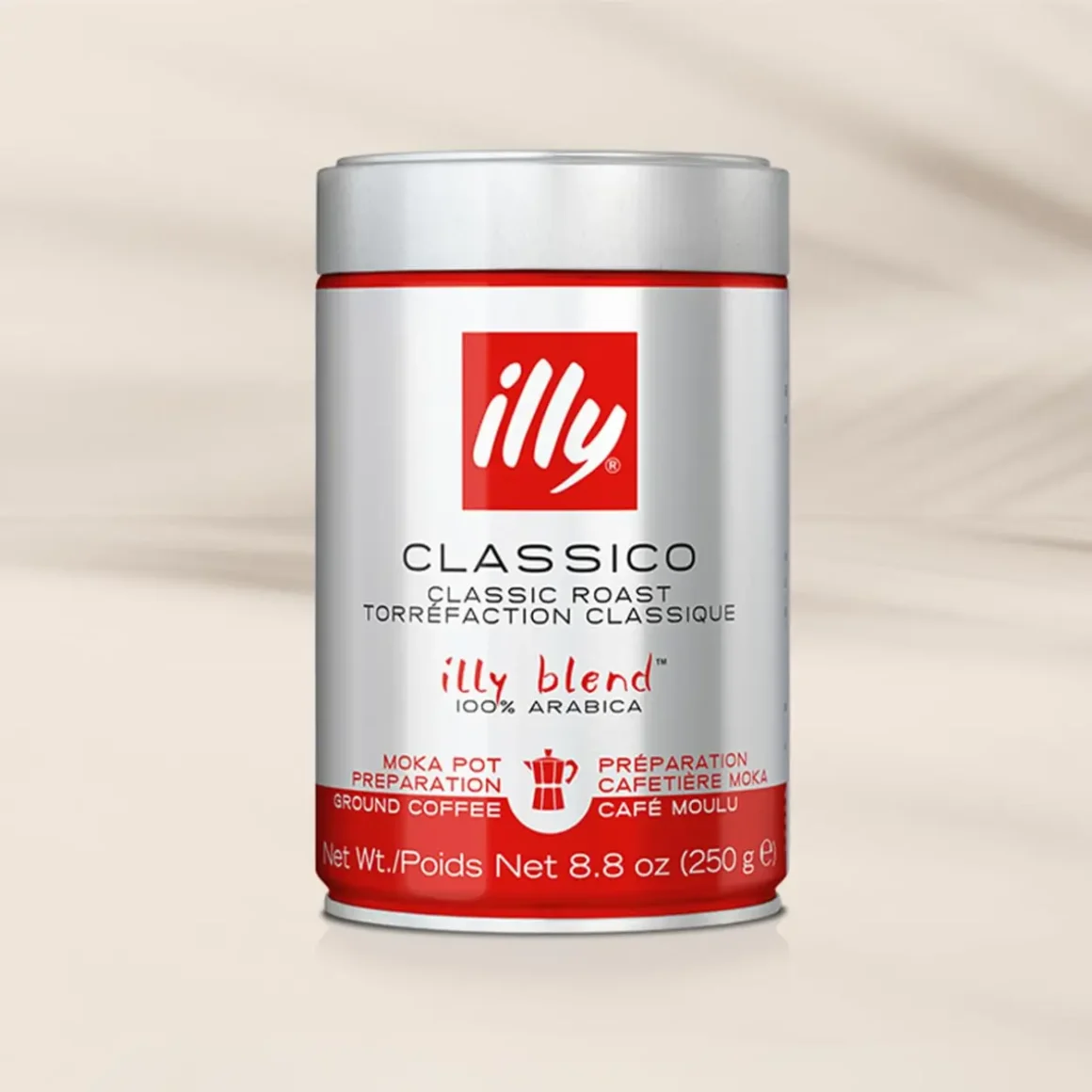
Illy, a name synonymous with Italian coffee excellence, has sculpted its unique niche in the coffee world. With its Classico Espresso Ground Coffee, Illy invites you to a morning ritual that’s been an integral part of countless Italian households.
- Signature Blend: Sourced from 9 of the world’s premier Arabica beans, ensuring a symphony of lush and balanced flavors with undertones of caramel and cocoa.
- Ethical Excellence: Illy’s dedication to ethical standards in the beverage industry has been recognized by Ethisphere for seven consecutive years.
- Decades of Mastery: A culmination of over eight decades of refining, resulting in a signature coffee blend recognized globally as the pinnacle of coffee artistry.
Choosing Illy is choosing a brand that has intertwined the art and science of coffee. Every cup is a testament to its dedication, passion, and relentless pursuit of perfection.
Lavazza Espresso Italiano

No products found.
When one thinks of quintessential Italian coffee, the name Lavazza invariably springs to mind. With its Espresso Italiano blend, Lavazza crafts an ode to Italy’s love affair with coffee.
- Authentic Flavor: 100% Arabica blend sourced from Central and South America, capturing potent aromas, delightful flavors, and a rich texture.
- Strength and Sophistication: A medium-toned roast with a subtle strength of 5/10, making every sip an elegant experience.
- Versatility Personified: While it’s a dream when brewed as espresso, its versatility shines, making it compatible with various coffee machines.
With Lavazza, you aren’t just getting a coffee; you’re getting a piece of Italy’s storied coffee heritage. Its consistent quality and commitment to the craft make it essential for true coffee aficionados.
Evaluating Coffee Bean Types
As we delve into the world of coffee, understanding the types and characteristics of coffee beans becomes paramount. After all, the quality and flavor of your brewed coffee are largely determined by the beans you choose. For those who rely on this coffee maker for their daily caffeine fix, identifying the best coffee beans for Moka pot can enhance the brewing experience exponentially. This guide will elucidate how bean origin affects flavor and why roast level is vital, particularly for enthusiasts of this coffee pot.
Role of Bean Origin in Flavor Profile
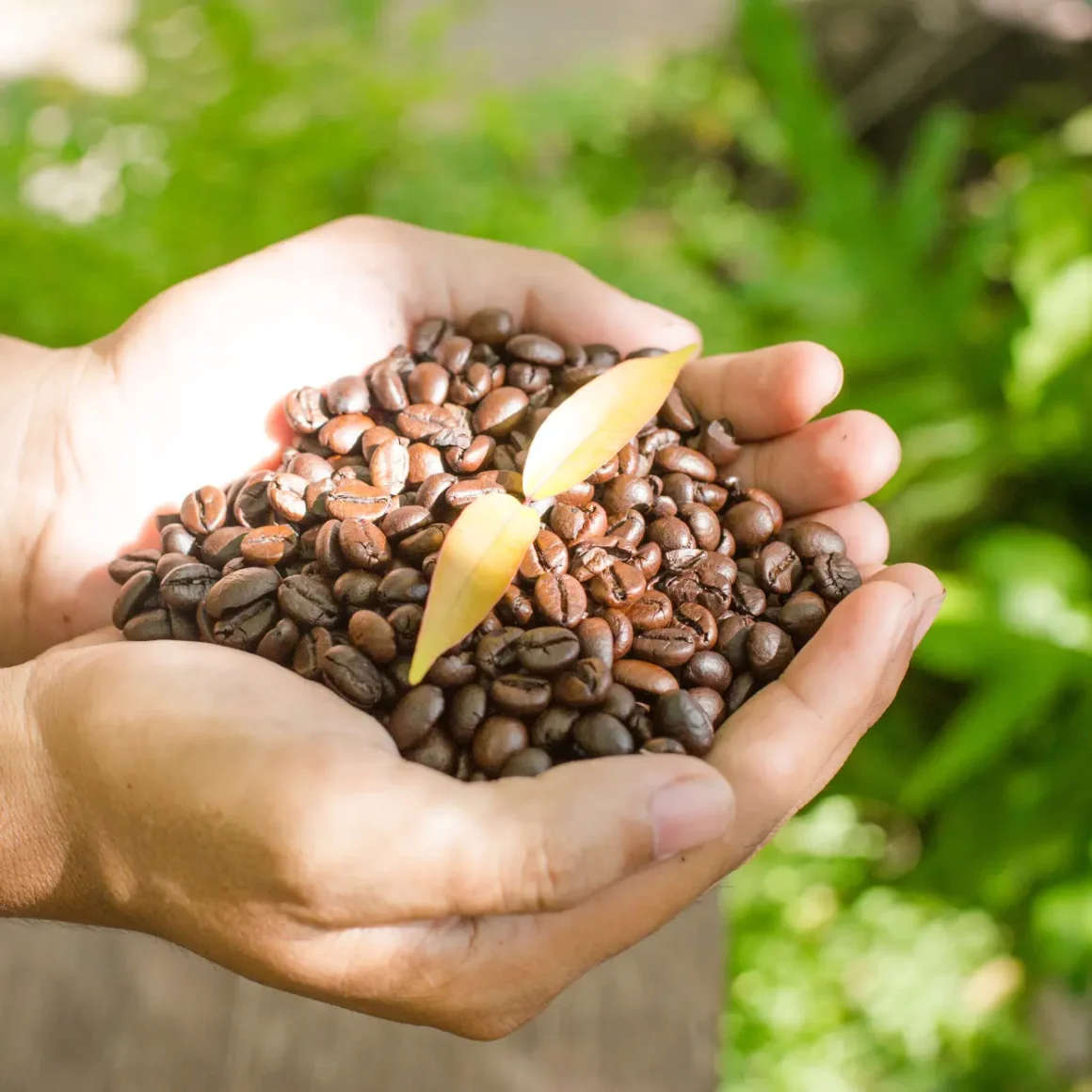
The geographical origin of a coffee bean significantly influences its taste and aroma. Different regions offer distinct soil compositions, climates, and altitudes, each contributing to the unique characteristics of the beans grown there.
- African Beans: Often from regions like Ethiopia or Kenya, these beans tend to have fruity, floral, and wine-like flavors. They’re celebrated for their bright acidity and dynamic range of flavors.
- South American Beans: Countries like Colombia and Brazil produce beans that often carry nutty, chocolatey notes with a medium to full body. They provide a well-rounded and balanced cup.
- Asian Beans: Originating from places such as Sumatra or Java, these beans often have earthy, woody flavors, presenting a heavier body and lower acidity.
Understanding the origin can help one predict the flavor profile, making the selection process more intuitive for those seeking specific tastes.
Importance of Roast Level for Moka Pot
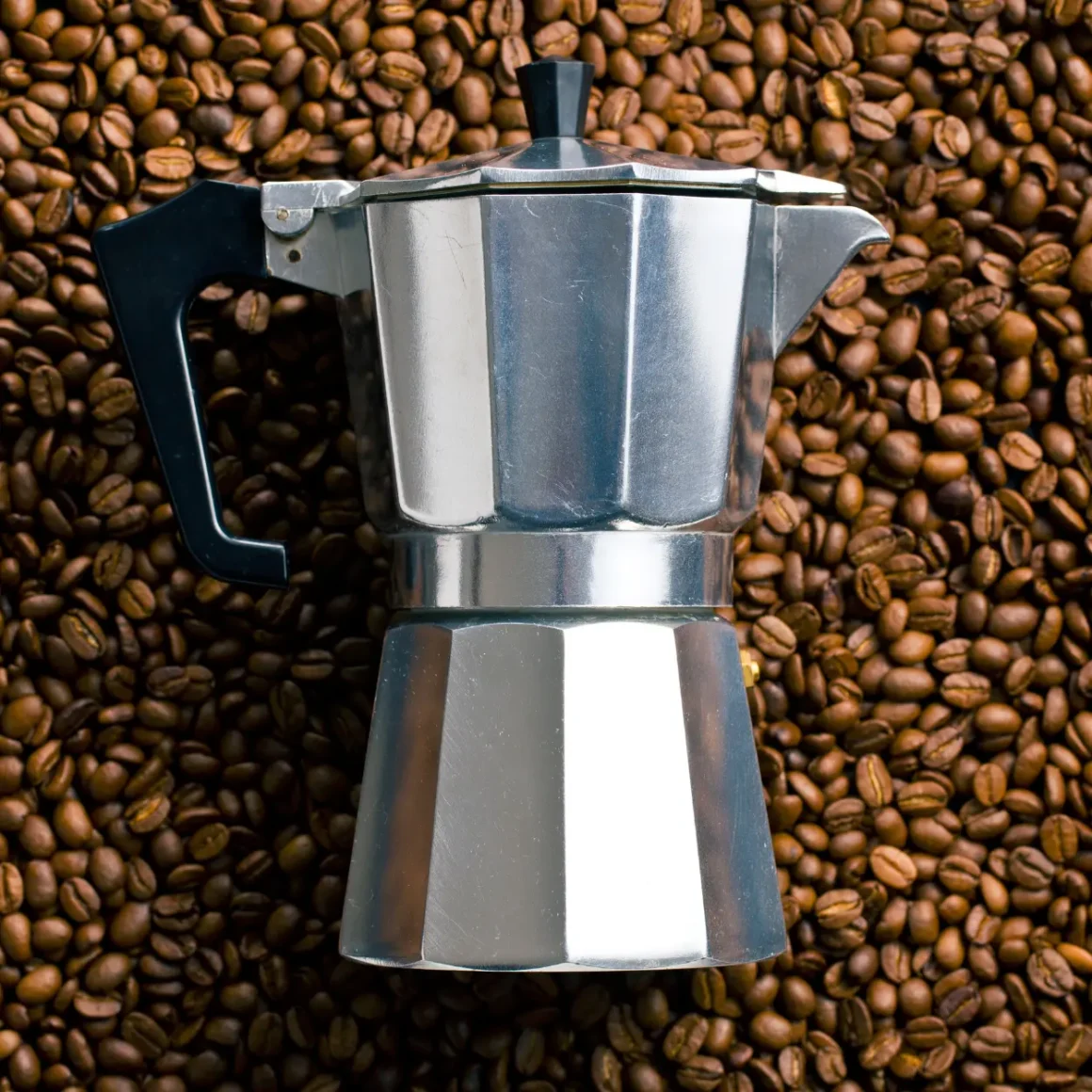
When it comes to this coffee pot brewing, the roast level of your beans plays a pivotal role in the final outcome of your coffee. This coffee maker, with its unique brewing mechanism, can either elevate or diminish the flavors of the beans based on their roast.
- Light Roasts: These beans retain most of their original coffee characteristics. While they can work in this coffee pot, they might not always deliver the full-bodied coffee many seek from this method.
- Medium Roasts: Offering a balanced flavor, acidity, and aroma, medium roasts are often considered optimal by many Moka pot aficionados. They harness this coffee maker’s strength without overpowering it.
- Dark Roasts: With their strong flavors and reduced acidity, dark roasts can sometimes overshadow the nuanced flavors that this coffee pot can produce. However, for those who prefer a heavy and bold cup, dark roasts might be the way to go.
In essence, while the best roast level can be subjective and based on personal preference, understanding how each interacts with this exquisite coffee maker can make all the difference in crafting that perfect cup.
Enhancing Your Coffee Experience
For true coffee lovers, every cup is not just a caffeine fix but an experience, a moment of delight. However, the difference between a good coffee and an exceptional one often lies in the details of preparation. By refining certain aspects of the brewing process, one can significantly elevate the coffee experience. From the grind size of the Moka pot to the water temperature and even the ratio of coffee to water, each step plays a critical role. Let’s explore these aspects further to make every cup worth savoring.
The Role of Grinding in Brewing
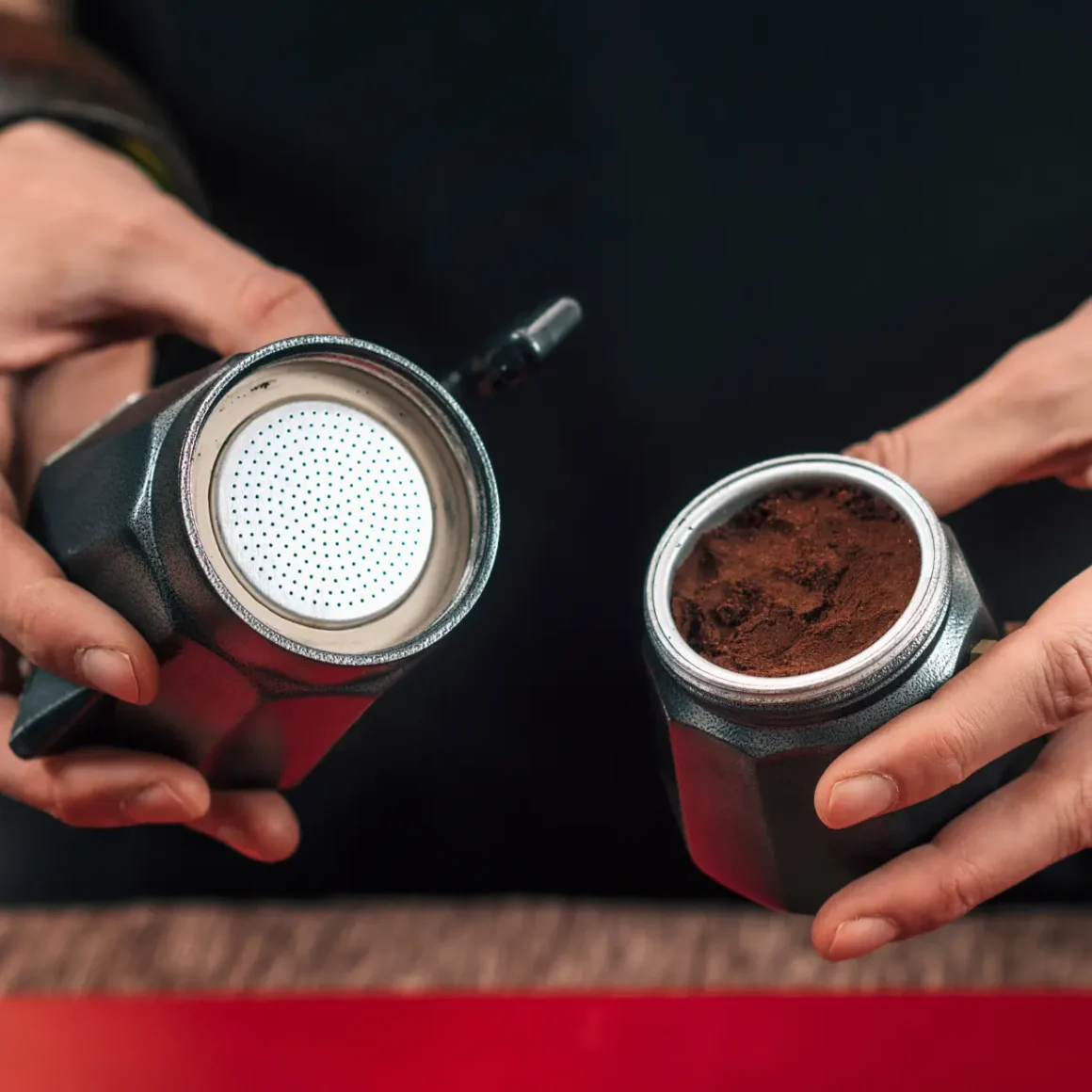
The grind size of your coffee beans can profoundly impact the flavor extraction during the brewing process.
- Coarse Grinds: These are similar in size to breadcrumbs. While they’re great for French press or cold brew, they might not extract enough flavor for this type of coffee maker, leading to a weak brew.
- Medium Grinds: Resembling the texture of sand, medium grinds are versatile and can work with various brewing methods, including this coffee pot, delivering a balanced extraction.
- Fine Grinds: As fine as table salt, these are the most favored for Moka pots. They allow for optimal extraction, resulting in a robust and flavorful brew.
To harness the full potential of your coffee pot, finding the right grind consistency is essential, ensuring that every sip is aromatic and rich.
Optimal Water Temperature for Moka Pot
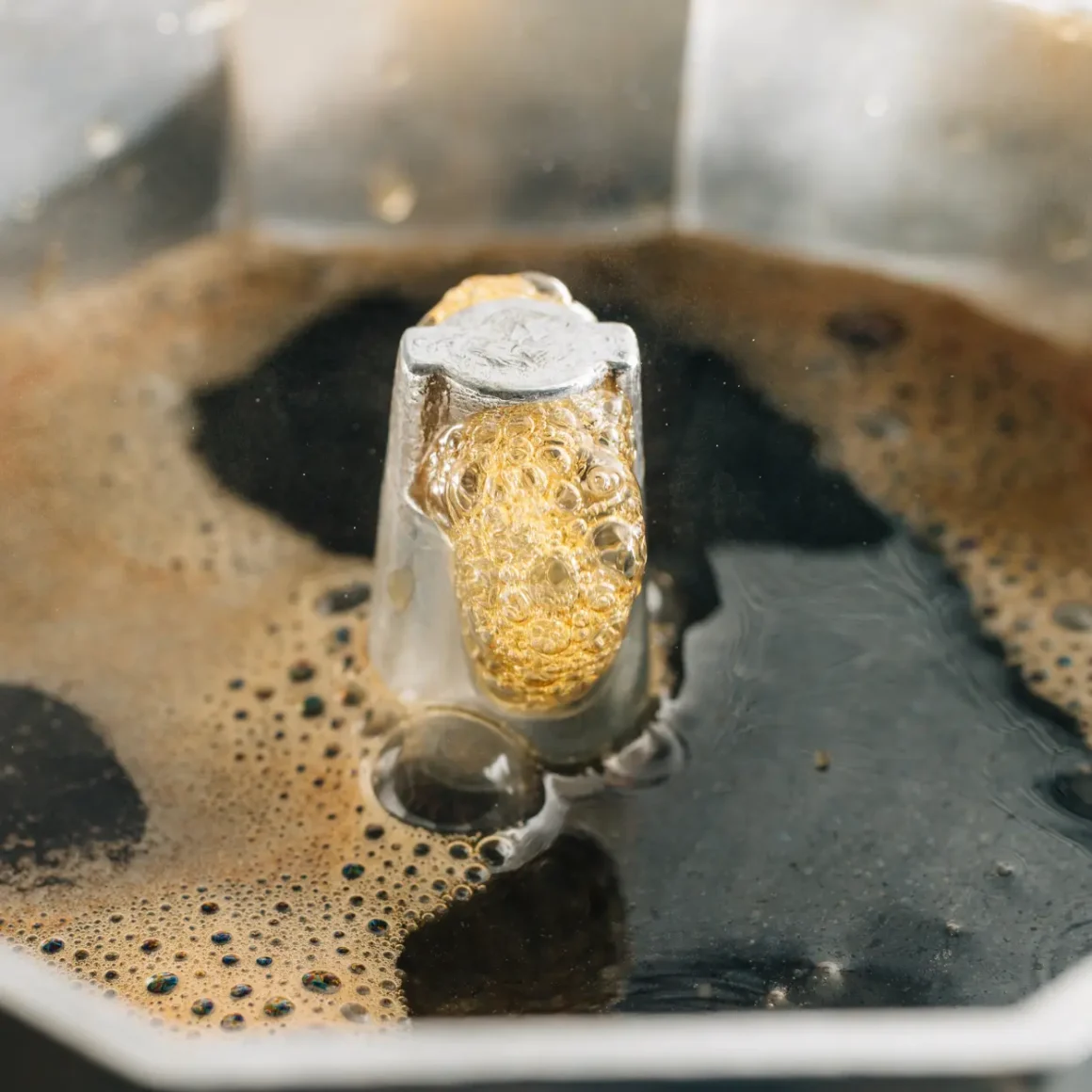
The water temperature plays a vital role in determining the flavors that are extracted from coffee grounds.
- Below Boiling: The ideal temperature for this coffee maker ranges between 195°F to 205°F (90°C to 96°C). At this temperature, the water extracts the coffee’s flavors efficiently without over-extraction, which can lead to bitterness.
- Boiling Water: Using water that’s boiling or too hot can cause over-extraction, leading to a burnt taste. It’s best to avoid reaching a full boil when using this coffee pot.
By monitoring and maintaining the right water temperature, you can ensure a brew that’s both strong and smooth, devoid of any unpleasant bitterness.
Experimenting with Coffee-to-Water Ratios
Finding the perfect balance between coffee and water can make a significant difference in your brew’s strength and taste.
- Standard Ratio: Typically, for Moka pots, a standard ratio might be 1:10, meaning for every gram of coffee, you use 10 grams of water. This often results in a balanced brew.
- Strong Brew: If you prefer a stronger cup, you might want to reduce the water amount slightly, perhaps trying a 1:8 ratio.
- Mild Brew: For those who enjoy a milder flavor, a 1:12 ratio can be ideal, using slightly more water for every gram of coffee.
While these are general guidelines, coffee brewing is a personal experience. It’s always worth experimenting to find the ratio that resonates with your palate.
In wrapping up, elevating your coffee experience is about embracing the journey of discovery. By paying attention to the grind size, water temperature, and coffee-to-water ratio, you can craft a cup that not only delights the taste buds but also warms the soul.
Maintenance and Sustainability
Embarking on the journey of a perfect brew not only revolves around selecting the best coffee for a moka pot but also hinges upon the maintenance of your brewing equipment and your choices concerning sustainability. A well-maintained moka pot combined with sustainable coffee choices results in a consistently flavorful brew, benefiting both the consumer and our environment.
Proper Cleaning and Maintenance of Moka Pot

Ensuring the longevity and functionality of your coffee pot is directly linked to its cleaning regimen. A well-kept moka pot is the cornerstone for a delightful coffee experience. Here’s how you can keep it in optimal condition:
- Daily Cleaning: After each brew, once your coffee maker is cool, dismantle it and discard the coffee grounds, ideally into a compost bin or trash. Doing so prevents oil accumulation and mold growth inside the pot.
- Rinse and Dry: It’s essential to cleanse each part thoroughly with warm water, focusing on areas like the filter basket and around the safety valve. (1) Following the rinse, dry each component using a cotton cloth or kitchen roll before putting it back together.
- Bi-annual Descaling: Due to the natural minerals in the water, over time, a mineral layer can form inside your pot, affecting the brew’s taste. To counteract this, initiate a descaling process every six months or monthly if you reside in a hard water region. This involves filling the pot with water, adding a bit of purified white vinegar, and letting it rest for several hours before running a brewing cycle.
To ensure the best results and longevity of your coffee maker, remember not to use abrasive sponges during cleaning and never overfill the pot beyond the safety valve.
Sustainable Coffee Choices for Moka Pot
In the era of conscious consumption, making sustainable coffee choices is not just a trend but a responsibility. When seeking the best coffee for your moka pot:
- Ethically Sourced Beans: Opt for coffee brands that source their beans ethically, ensuring fair pay and good working conditions for farmers.
- Organic Options: Beans grown without pesticides or synthetic fertilizers not only promise a cleaner brew but also contribute to healthier soil and environments.
- Shade-Grown Coffee: This farming method preserves forests, providing bird habitats and maintaining a balanced ecosystem.
Marrying sustainability with quality ensures that each cup you brew doesn’t just taste good but feels good too.
Reducing Waste: Eco-friendly Coffee Practices
As coffee enthusiasts, our responsibility extends beyond just the brew. Embracing eco-friendly practices can significantly reduce waste and our carbon footprint:
- Composting Grounds: Post-brew coffee grounds are organic matter, making them perfect for composting. They enrich the soil and are particularly beneficial for acid-loving plants. (2)
- Reusable Filters: Consider using metal filters that can be cleaned and reused, eliminating the need for disposable paper ones.
- Eco-friendly Packaging: Opt for brands that use biodegradable or recyclable packaging for their coffee beans.
Making these small yet impactful changes in your coffee routine can make a massive difference in our collective journey toward a more sustainable future.
Understanding Moka Pot Brewing
In the realm of coffee brewing, the Moka Pot stands as an iconic symbol of traditional coffee preparation. As a bridge between past and present, this coffee pot offers both enthusiasts and casual drinkers a unique brewing experience. Delve with us as we explore its rich history, mechanical ingenuity, and tips to extract the best coffee flavors from this timeless apparatus.
The History and Evolution of Moka Pot

The Moka Pot’s inception can be traced back to 1933, marking a significant chapter in the annals of coffee brewing.
- Origins: Conceived by the inventive mind of Luigi Di Ponti, this coffee maker was named after the Yemeni city, Mocha. (3)
- Patent and Production: Alfonso Bialetti, a visionary in the aluminum trade, recognized its potential and acquired the patent, ushering the Moka Pot into the mainstream of Italian culture.
- Global Popularity: From its Italian roots, its fame spread across Europe and Latin America, establishing itself as a household essential.
- Design Evolution: Originally designed with aluminum and Bakelite handles, over the years, the Moka Pot has seen variations, with some models featuring heat-resistant glass tops.
By the end of World War II, this distinguished coffee pot not only symbolized Italian coffee culture but also influenced brewing methods across southern Europe. Its iconic stature is celebrated in museums worldwide, attesting to its lasting impact on coffee history.
Brewing Mechanism: How Moka Pot Works
This coffee maker operates on a beautifully simple yet scientifically intriguing principle.
- Basic Structure: The pot comprises three main chambers. The bottom section (A) is for water, a basket (B) contains the coffee grounds, and the brewed coffee collects in the top section (C).
- Steam Propulsion: As the water heats, steam-driven pressure forces it through the coffee grounds, culminating in a rich brew in the upper chamber.
- Compatibility: Suitable for both flame and electric stoves, certain stainless steel models can also be used on induction cooktops.
- Scientific Perspective: Numerous studies between 2001 and 2009 elucidated the Moka Pot’s brewing dynamics, highlighting the role of vapor pressure in driving the brewing process.
Ensuring a perfect brew, a rubber gasket guarantees an airtight connection, and a safety vent manages pressure levels, making the process both effective and safe.
Tips for Perfect Moka Pot Coffee

To master the art of brewing with a Moka Pot, it’s essential to grasp some fundamental practices.
- Water Level: Fill the boiler (A) up to its marked line, ensuring safety by keeping it below the vent.
- Coffee Grounds: Finely ground coffee ensures optimal extraction. The way it’s packed can influence brew strength and extraction speed.
- Heat Management: A steady, medium heat is key. Too high can lead to over-extraction, while too low might not yield a full-bodied brew.
- Listen for the Gurgle: When the lower chamber nears depletion, a distinct gurgling sound is audible. This is a cue that the brewing process is nearing its end, and it’s time to remove the pot from the heat.
By adhering to these guidelines and appreciating the Moka Pot’s rich history and ingenious design, every coffee enthusiast can unlock a brew that’s both rich in tradition and flavor.
Conclusion
Navigating the intricate world of coffee can often be a complex endeavor, especially when seeking the perfect brew. Through our journey, we’ve delved deep into understanding the nuances of this coffee pot and the exceptional flavors it can unlock. We’ve explored its rich history, the precision of its brewing mechanics, and the importance of maintenance and sustainability in ensuring every cup is a testament to its legacy.
As we’ve seen, the right choice of beans, especially brands like Nepal Himalayan Coffee by Volcanica, 100% Kona Natural Medium Roast, Illy Classico Espresso, and others, can significantly elevate the experience. In essence, to truly savor the richness and flavor, choosing the best coffee for a moka pot is paramount. Whether you’re a seasoned coffee aficionado or a curious beginner, armed with this knowledge, you’re well on your way to brewing perfection. Cheers to many delightful mornings ahead!
FAQ
How does the origin of coffee beans affect the flavor in a Moka Pot?
The origin of coffee beans dictates their unique flavor profiles, which get accentuated when brewed in a Moka Pot.
Can I use pre-ground coffee for Moka Pot?
Yes, you can use pre-ground coffee for Moka Pot, but ensure it's a medium-fine grind for optimal results.
How often should I clean my Moka Pot?
You should clean your Moka Pot after each use and consider a deeper cleaning or descaling monthly.
Are there eco-friendly coffee options suitable for Moka Pot brewing?
Yes, there are sustainably sourced and organic coffee options that work excellently with Moka Pot brewing.












